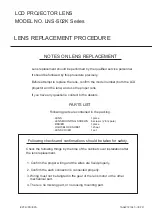
Zynq-7000 AP SoC and 7 Series FPGAs MIS v4.1
232
UG586 November 30, 2016
Chapter 1:
DDR3 and DDR2 SDRAM Memory Interface Solution
Many of these common issues can also be applied to debugging design simulations. Details
are provided on:
•
•
•
Determine the Failing Calibration Stage
•
•
Debugging PHASER_IN PHASELOCKED Calibration Failures (dbg_pi_phaselock_err = 1)
•
Debugging PHASER_IN DQSFOUND Calibration Failures (dbg_pi_dqsfound_err = 1)
•
Debugging Write Leveling Failures (dbg_wrlvl_err = 1)
•
Debugging MPR Read Leveling Failures – DDR3 Only (dbg_rdlvl_err[1] = 1)
•
Debugging OCLKDELAYED Calibration Failures
•
Debugging Write Calibration Failures (dbg_wrcal_err = 1)
•
Debugging Read Leveling Failures (dbg_rdlvl_err[0] = 1)
•
Debugging PRBS Read Leveling Failures
•
•
General Checks
This section details the list of general checks, primarily board level, which need to be
verified before moving forward with the debug process. Strict adherence to the proper
board design is critical in working with high speed memory interfaces.
• Ensure all guidelines referenced in the
have been followed. The
section includes information on trace matching, PCB Routing, noise,
termination, I/O Standards, and pin/bank requirements. Adherence to these guidelines,
along with proper board design and signal integrity analysis, is critical to the success of
high-speed memory interfaces.
• Measure all voltages on the board during idle and non-idle times to ensure the
voltages are set appropriately and noise is within specifications.
°
Ensure the termination voltage regulator (V
tt
) is turned on (set to 0.75V).
°
Ensure V
REF
is measured.
• When applicable, check VRN/VRP resistors. Note the values are not the same as
Virtex-6 FPGA.
• Look at the clock inputs to ensure they are clean.
















































